A resistance of RΩ draws current from a potentiometer. The potentiometer has a total resistance R0Ω. A voltage V is supplied to the potentiometer. Derive an expression for the voltage fed into the circuit when the slide contact is in the middle of potentiometer.
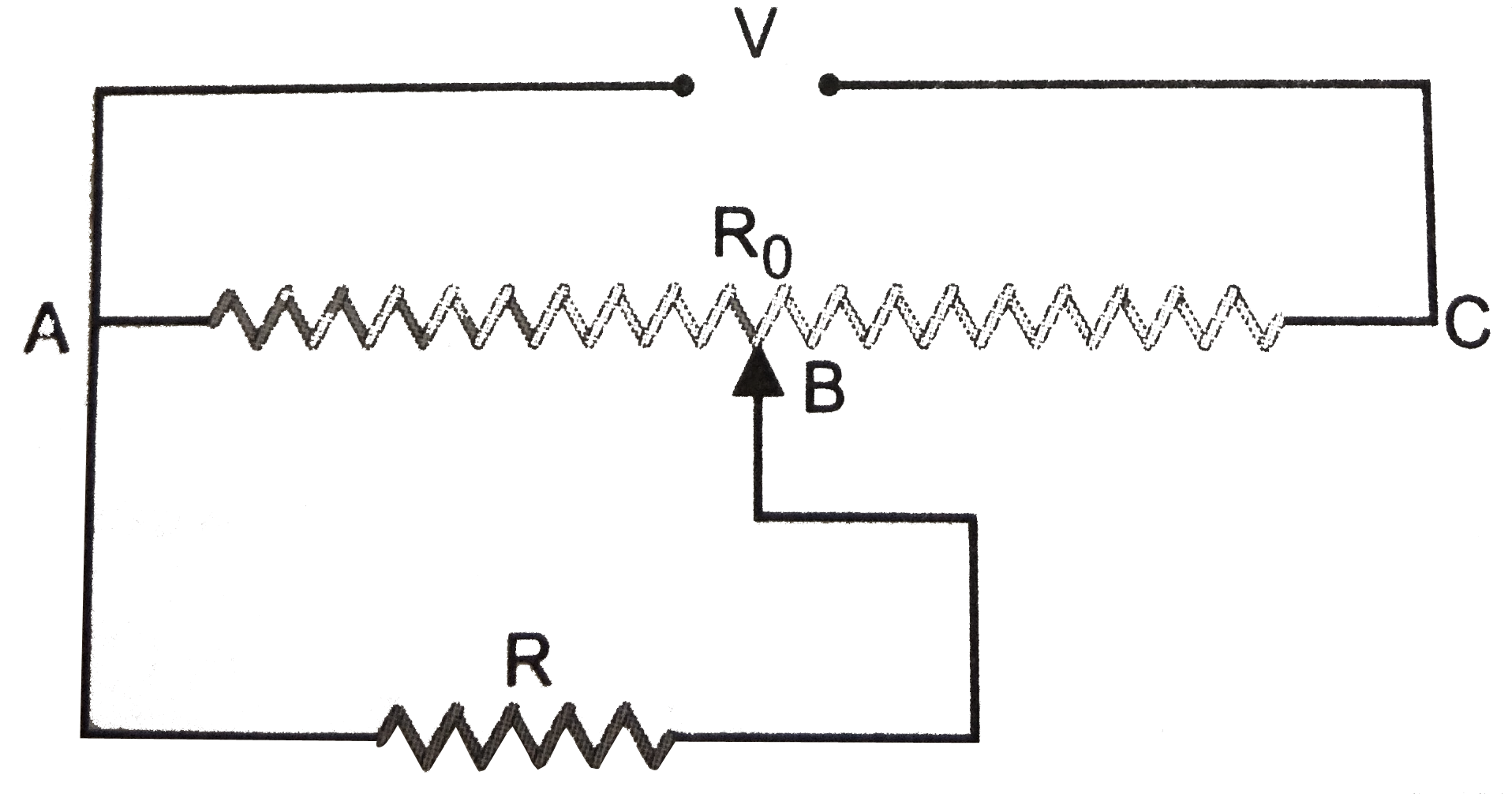
While the slide is in the middle of the potentiometer only half of its resistance (R0/2) will be between the points A and B. Hence, the total resistance between A and B, say, R1, will be given by the following expression:
1R1=1R+1(R0/2)
R1=R0RR0+2R
The total resistance between A and C will be sum of resistance between A and B and B and C, i.e., R1+R0/2
∴ The current flowing through the potentiometer will be
I=VR1+R0/2=2V2R1+R0
Substituting for R1, we have a
V1=2V(R0×RR0+2R)+R0×R0×RR0+2R
V1=2VR2R+R0+2R
or V1=2VRR0+4R.
Topper's Solved these Questions
Similar Questions
A resistance of RΩ draws current from a potentiometer as shown in Fig. The potentiometer has a total resistance R0Ω. A voltage Vis supplied to the potentiometer. Derive an expression for the voltage across R when the sliding contact is in the middle of the potentiometer.

View SolutionA resistance of R draws current from a potentiometer. The potentiometer wire, AB , has a total resistance of R0, A voltage V is supplied to the potentiometer. Derive an expression for the voltage across R when the sliding contact is in the middle of potentialmeter wire.
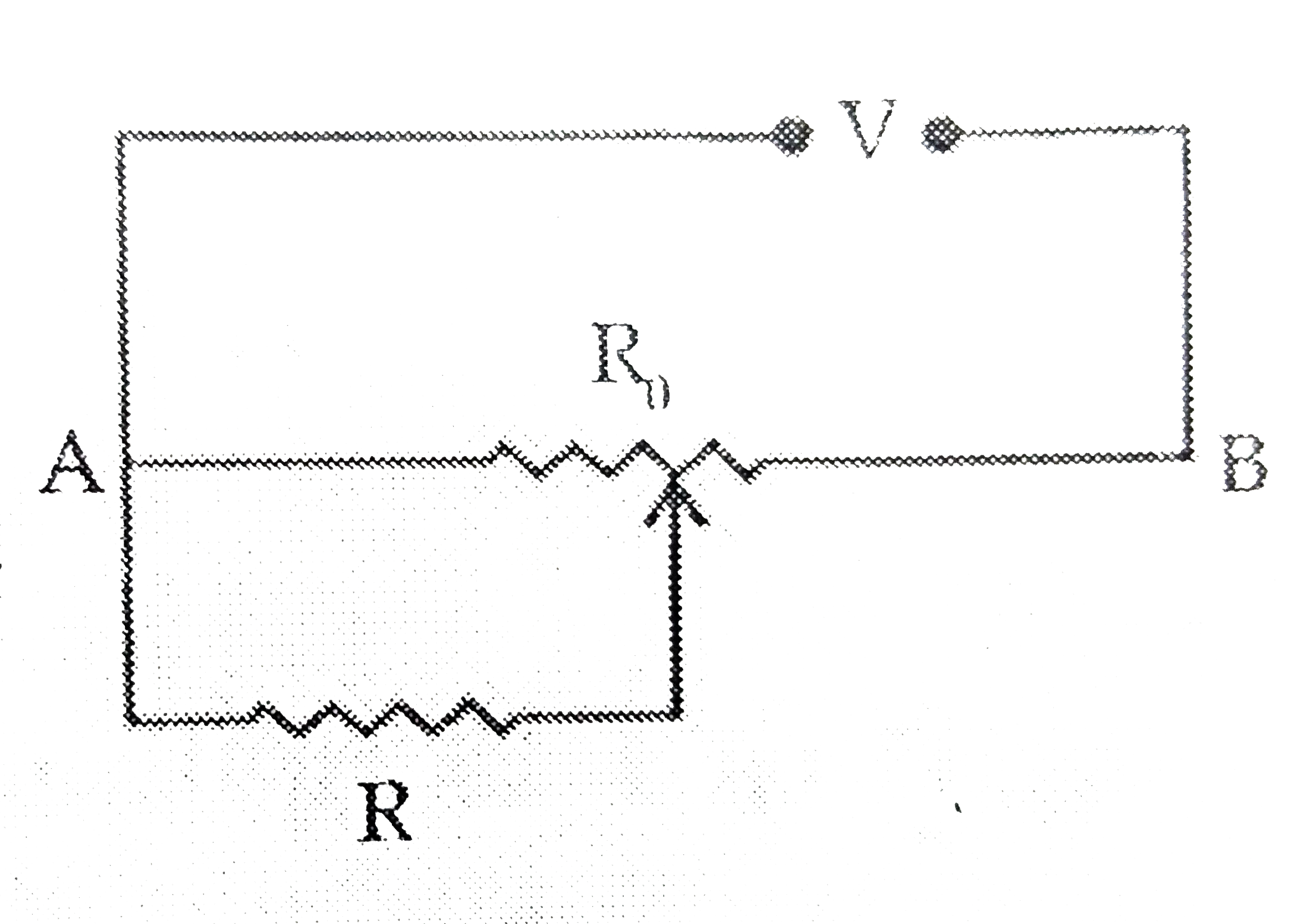
View Solution
Knowledge Check
Assertion : Potentiometer is used only to compare potential differences.
Reason: The potentiometer draws current from the voltage source being measured .AIf both assertion and reason are true and reason is the correct explantion of assertion.BIf both assertion and reason are true and reason is not the correct explantion of assertion.CIf assertion is false but reason is true.DIf assertion is true but reason is false.
A resistance of R draw current from a potentiometer. The potentiometer wire, AB, has total resistance of R0. A voltage V is supplied to the potentiometer. Derive an expression for the voltage across R when the sliding contact is in the middle of potentiometer wire.
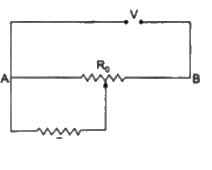
View SolutionThe given potentiometer has its wire of resistance 10Ω When the sliding contact is in the middle of the potentiometer wire, the potential drop across 2Ω resistor is :
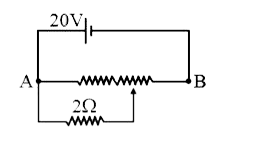
View SolutionA constant voltage of 3 V is supplied to a potentiometer wire. A cell of emf 2 V is balanced by a voltage drop across 416 cm of the wire. Find the total length of the potentiometer wire.
View SolutionA current of 1.0 mA is flowing through a potentiometer wire of length 4 m and of resistance 4Ω, find the potential gradient of potentiometer wire
View SolutionWhen a balance point is obtained in a potentiometer for finding the internal resistance of a cell, the current through the potentiometer wire is due to
View SolutionThe weight of an object on the surface of the Earth is 40 N. Its weight at a height equal to the radius of the Earth is
View Solution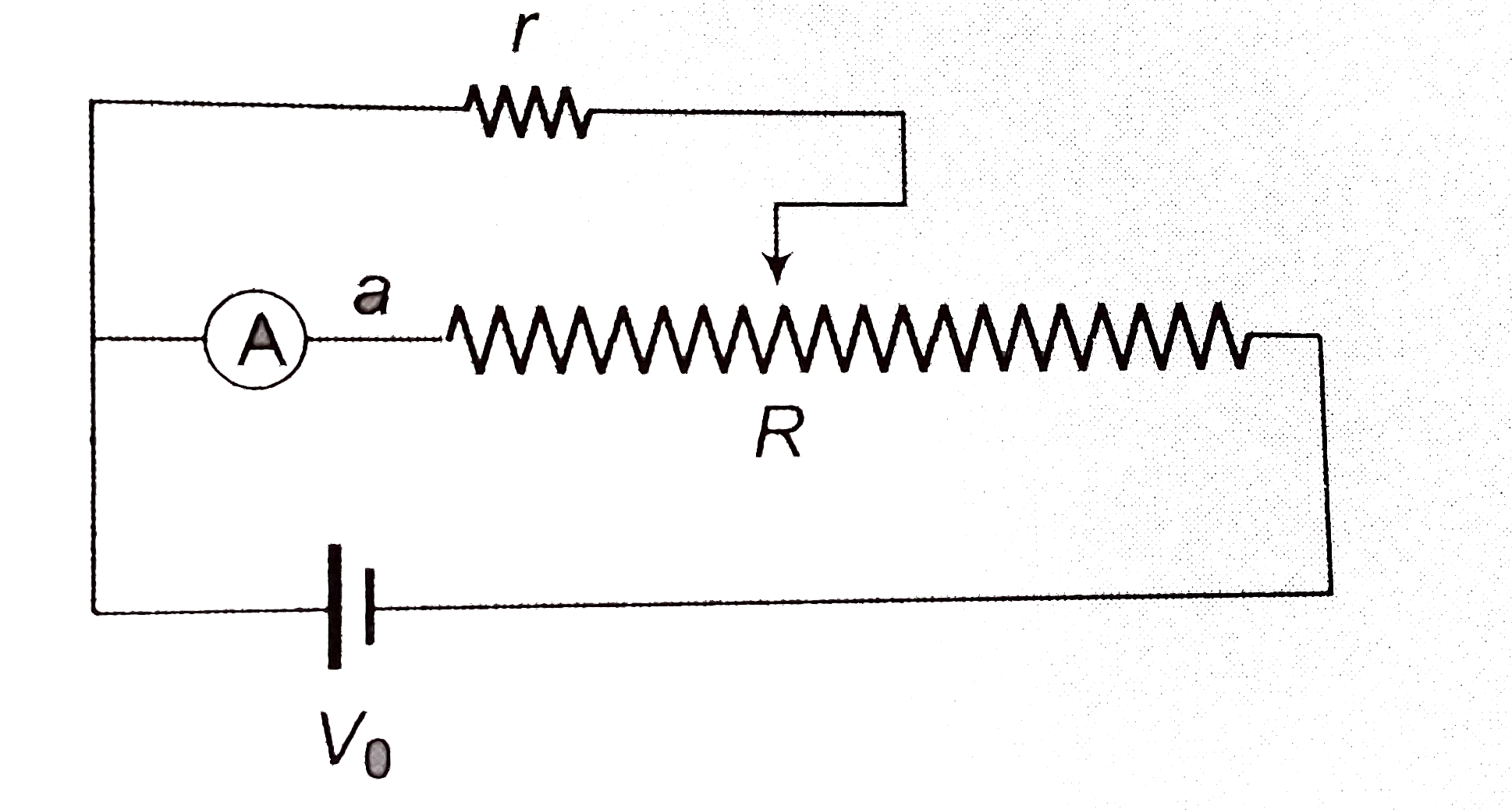
A constant voltage V0 is applied to a potentiometer of resistance R connected to an ammeter. A constant resistor r is connected to the sliding contact of the potentiometer and the fixed end of the potentiometer. How will the reading of ammeter vary as the sliding contact is moved from one end of the potentiometer to the other ? The resistance of ammeter is assumed to be negligible.
View Solution
